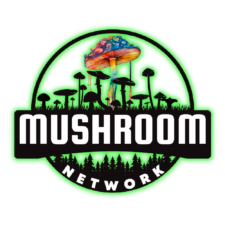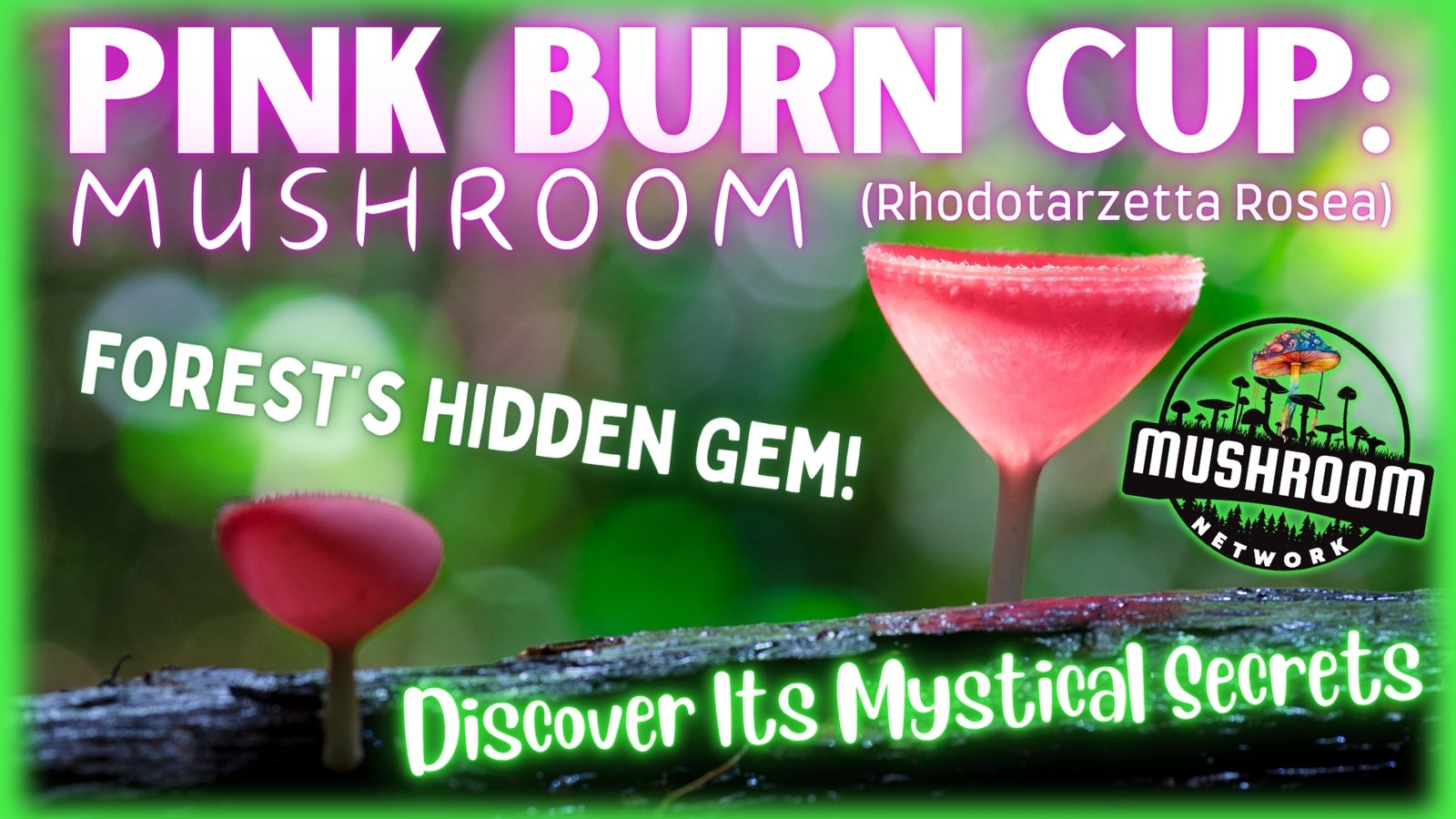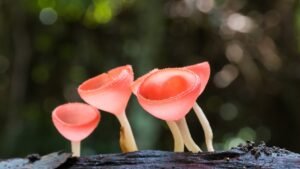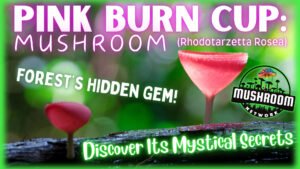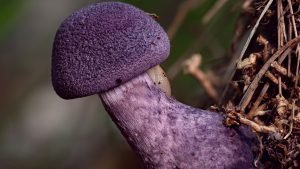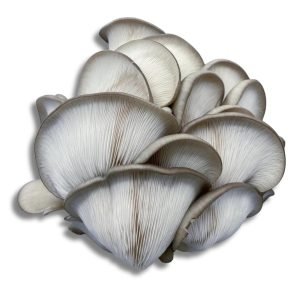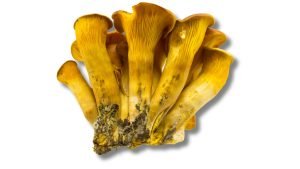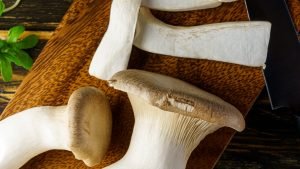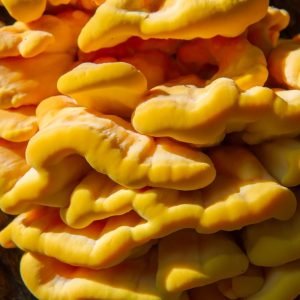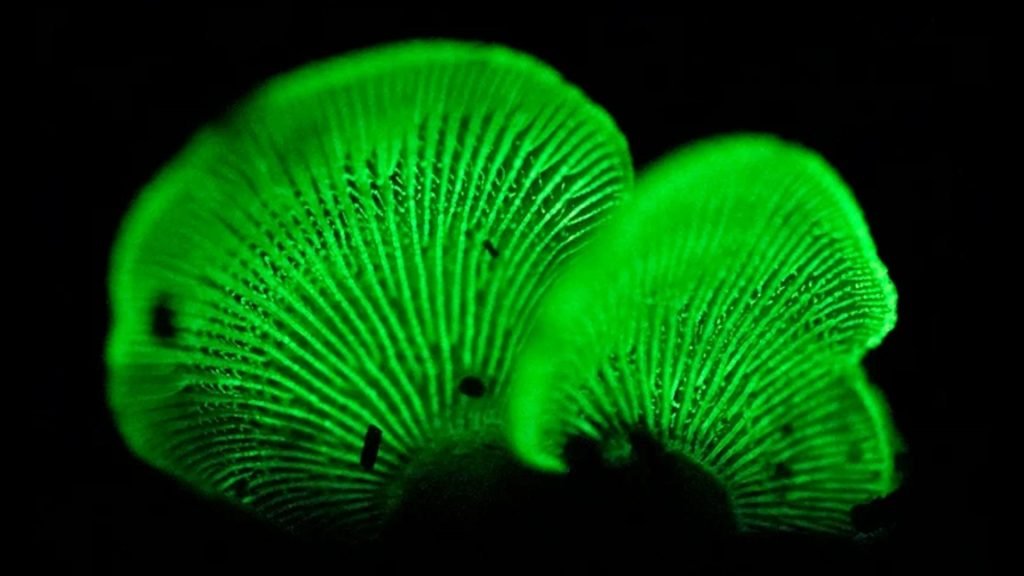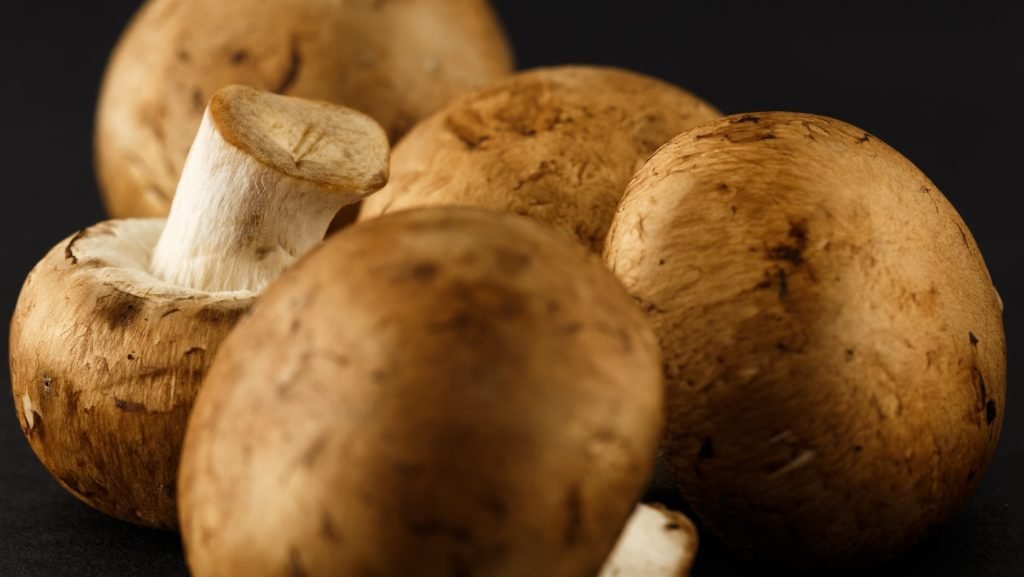Welcome, dear mycophiles and curious minds, to our Pink Burn Cup (Rhodotarzetta Rosea) Data Page! Whether you’re an avid mushroom forager, a mycology enthusiast, or just someone who appreciates the wonders of nature, we’ve got some fascinating and scientifically significant details to share. Today, we dive into the vibrant and captivating world of the Pink Burn Cup, a mushroom that’s as delightful to the eyes as it is intriguing to the mind. So grab your magnifying glass and join us on this fungal adventure!
SCIENTIFIC NAME:
(Rhodotarzetta Rosea)
COMMON NAME(S):
Pink Burn Cup | Rosy Tarzetta | Rose Fairy Goblet
I-NAME:
ROSE
Founding Mycologist/Discovered By:
-Unknown-
If you have information, please help us enrich our database!

RECOMMENDED TEMPERATURES
Colonizing Temps:20-25°C (68-77°F) | Fruiting Temps:15-20°C (59-68°F) |
SPORE COLOR:
TRANSPARENT
The Pink Burn Cup, scientifically known as Rhodotarzetta Rosea, is a small but striking mushroom found in various parts of the world. Its vivid pink hue and delicate cup shape make it a favorite among mushroom enthusiasts and photographers alike. This mushroom not only stands out visually but also contributes to the ecological balance of its habitat, breaking down organic matter and enriching the soil.
Step right up to the Mushroom Carnival! 🍄🎪 New here? Don’t wander in the wild yonder picking ‘shrooms willy-nilly! Educate yourself and avoid the ‘oops, I ate it’ face. 🤯 Log In or Become a Myco-Patron (it’s as free as a spore in the wind!). Join us to unravel the myco-magic! 🧙
DESCRIPTION:
The Pink Burn Cup mushroom boasts a distinctive rosy pink color, resembling a tiny goblet or cup. It typically measures about 1-2 cm in diameter and has a smooth, slightly velvety surface. The stem is short and slender, often paler than the cup itself. When mature, the cup opens up, creating a beautiful contrast against the green moss and decaying wood where it often grows. It emits a faint, earthy smell, typical of many fungi.
INTENDED USES:



HABITAT AND DISTRIBUTION:
The Pink Burn Cup thrives in moist, temperate forests, particularly in areas with abundant decaying wood and leaf litter. It prefers shady, humid environments and can often be found growing on charred wood, hence its common name. Geographically, it is widespread, appearing in various continents including North America, Europe, and Asia.
ECOLOGICAL ROLE:
As a saprotrophic fungus, the Pink Burn Cup plays a crucial role in breaking down dead organic material, recycling nutrients back into the ecosystem. This process aids in soil formation and fertility, supporting plant growth and maintaining ecological balance. It also serves as a bioindicator, helping ecologists monitor the health of forest environments.
GROWTH AND CULTIVATION:
Cultivating the Pink Burn Cup can be challenging due to its specific environmental needs. It prefers a substrate of charred wood or decaying hardwood and thrives in high humidity. The cultivation process involves maintaining stable temperatures and moisture levels to mimic its natural habitat. Given the right conditions, fruiting can occur within a few weeks, providing a rewarding experience for dedicated growers.
No posts found!
HISTORICAL & CULTURAL INFO:
The Pink Burn Cup has been a subject of fascination for many cultures, often featured in folklore and nature stories due to its enchanting appearance. Historically, it has been depicted in various forms of art, symbolizing beauty and the delicate balance of nature. Though not widely used in traditional medicine or cuisine, it remains a beloved specimen among naturalists and mycologists.
GENETIC LINEAGE/HISTORY:
The genetic history of the Pink Burn Cup is still under exploration, with ongoing research aiming to understand its evolutionary relationships within the fungal kingdom. It belongs to the Ascomycota phylum, a group known for their spore-producing structures, and is closely related to other cup fungi.
No posts found!
CHEMICAL COMPOSITION:
The genetic history of the Pink Burn Cup is still under exploration, with ongoing research aiming to understand its evolutionary relationships within the fungal kingdom. It belongs to the Ascomycota phylum, a group known for their spore-producing structures, and is closely related to other cup fungi.
FUNCTIONAL (WELLNESS) PROPERTIES (if applicable):
Currently, the Pink Burn Cup is not recognized for any medicinal properties. It is primarily valued for its ecological contributions and aesthetic appeal.
CULINARY USES (if applicable):
The Pink Burn Cup is not edible and should not be consumed. It is best appreciated for its beauty and ecological significance.
CAUTIONS & WARNINGS:
This mushroom is not edible, and handling should be done with care to avoid disrupting its natural habitat. As always, when observing mushrooms in the wild, ensure proper identification and avoid disturbing the ecosystem.

FINAL CONSIDERATIONS:
The Pink Burn Cup is a true gem in the fungal world, captivating with its beauty and essential ecological role. Don’t miss out on exploring the dynamic offerings in our 🍄 Marketplace, where you can find a variety of fungi-related products and connect with knowledgeable Mycologist Vendors. Happy foraging, and remember, life’s too short not to appreciate the little things – like tiny, pink mushrooms!
Don’t forget to check out the 🍄 Mushroom Network’s Marketplace to see what’s available. But hurry, our shelves are constantly evolving, and you wouldn’t want to miss out on this wonderful mushroom. Join our growing network of Patrons, Genetics, and Mycologist Vendors only on the 🍄 Mushroom Network!
Caught in the middle of the Mushroom Metropolis! 🍄🎶 If you’re just tuning in, you’re one step away from becoming a spore savant! Don’t just stand there like a stump – Log In or Become a Myco-Patron (FREE, like a mushroom in the wild!). Unlock the enchanted encyclopedia of fungi. 📚✨
No posts found!
No posts found!
FAQs:
They grow in moist, temperate forests on decaying wood, often in shaded, humid areas.
No, they are not edible and are best enjoyed for their visual appeal.
They reproduce through spores, which are typically transparent and hard to see.
They help decompose organic matter, recycling nutrients back into the soil.
Thank you for joining us on this exploration of the Pink Burn Cup! Remember, nature’s smallest wonders often hold the greatest secrets. Keep discovering, keep learning, and as always, stay curious! Here’s a little myco-wisdom to leave you with: “In every walk with nature, one receives far more than he seeks.” – John Muir. And hey, always look down – you might just find a tiny pink cup waiting to surprise you!
Related Articles:
The Eco-Warriors: How Fungi Like the Pink Burn Cup Help Our Planet
About This Article: Meet the eco-warriors of the forest! 🌳🍄 Discover how fungi like the...
Read More...Fungi’s Fab Five: The Most Photogenic Mushrooms
About This Article: Say cheese, fungi fans! Check out these photogenic mushrooms that are ready...
Read More...The Eco-Warriors: How Fungi Like the Pink Burn Cup Help Our Planet
About This Article: Meet the eco-warriors of the forest! 🌳🍄 Discover how fungi like the...
Read More...Pink Burn Cup (Rhodotarzetta Rosea)
Welcome, dear mycophiles and curious minds, to our Pink Burn Cup (Rhodotarzetta Rosea) Data Page!...
Read More...Other Mushroom Species To Research:
Turkey Tail (Trametes Versicolor)
Welcome to the enchanting world of Turkey Tail mushrooms, where the beauty of nature meets...
Read More...Violet Webcap (Cortinarius Violaceus)
Welcome to the detailed exploration of Cortinarius Violaceus, a mushroom as intriguing as it is...
Read More...King Blue Oyster (Pleurotus Ostreatus)
Scientific Name: Pleurotus Ostreatus COMMON NAME(S): King Blue Oyster | Blue Oyster | Blue Pearl...
Read More...Jack-O’-Lantern Mushroom (Omphalotus Olearius)
SCIENTIFIC NAME: (Omphalotus Olearius) COMMON NAME(S): Jack-O’-Lantern I-NAME: JOL SPORE COLOR: PALE-YELLOW Deep within the...
Read More...Other Recommended Reads:
King Oyster Mushroom: A Royal Delicacy
King Oyster Mushroom: A Royal Delicacy, delves deep into the culinary applications of this majestic...
Read More...Nature’s Vegetarian Chicken: The Science Behind the Texture and Flavor
Strolling through the forest, it’s impossible to miss the flamboyant Chicken of the Woods mushroom,...
Read More...Shiitake: The Umami Powerhouse
Unearthing the Umami: At the heart of Asian gastronomy lies a flavorful secret, the Shiitake...
Read More...Chicken of the Woods: The Tasty Forest Delight
A culinary-focused article exploring recipes and preparation methods for this mushroom. Chicken of the Woods:...
Read More...Whoa there, Spore Sport! 🍄 Looks like you’re not logged in yet. Don’t you know what you’re missing? MYCO-CREDITS! Imagine all the fungal fun you could have. It’s like finding a Morel in May and not picking it. Tragic, right? Log In or Become a Myco-Patron and start racking up those credits. It’s more rewarding than finding a mushroom in your backyard! 🌟🏡
